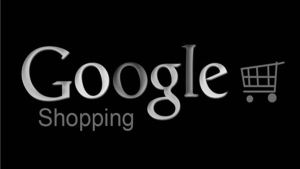
Google Shopping
What Is Google Shopping?
Google Shopping is a comparison shopping engine, which is a service that allows retailers to advertise their products to searchers in a visually appealing way.
This means if someone searches for a product that you sell, Google will show relevant Shopping ads for your products, and those of your competitors.
If the user clicks on your ad, Google will take her right to the product page.
Each Google Shopping ad includes an image, the product title, the price, the name of the retailer and sometimes some retailer-specific information like shipping costs or reviews.
How Does Google Shopping Work?
As discussed before, Google Shopping Ads are very different in how they work than regular Search Ads.
First, Google’s algorithms process a special file called a product feed (more on this later) that contains all of your store’s product data (things like titles, descriptions, images, price, etc.).
Google uses this data to match your products with relevant search queries as well as to create the actual ads.
People will see Shopping Ads that are relevant for their search queries, showing an image of the product, with the price and additional information (such as reviews).
If someone likes what they see, they click on your ad which will take them to your website.
In return, Google charges you for that click.
Let me show you a simple example. You sell mobile phone accessories and launch a Shopping campaign to increase your sales.
- You provide Google with your product data in a product feed
- Someone searches for “iPhone 11 wireless charger” in Google
- Google’s algorithms select an iPhone 11-compatible wireless charger from your store, create a Shopping ad for it, and show it to the searcher along with other ads
- The searcher sees the ads and clicks on yours
- The searcher is taken to your products page
- Google charges you for the click
Bidding in Google Shopping:
Since Google Shopping charges for every click, you want to make sure that each click contributes to your results.
But how do you make sure that you’re not wasting money on your Shopping campaigns?
Obviously, keeping your max CPCs low prevents you from spending too much overall.
But if your bids are too low, Google won’t show your ads that often.
So, you have to find a good balance between staying cost-efficient and receiving decent traffic on your Shopping ads.
Using Audiences for Google Shopping Ads:
Using Audiences, you’re able to target people that have been on your website but left without a purchase.
This is called Remarketing Lists for Search Ads (RLSA) and allows you to increase (or decrease) your max. CPC based on what other information you have about a certain visitor.
Someone that has abandoned her cart might be a lot more valuable than a product page visitor. Through Audiences, you’re able to adjust your bid accordingly.
To use an Audience in your Google Shopping campaigns, you need a minimum of 1,000 people in that audience.
That’s quite a lot of people. So while you could create a specific campaign to exclusively target these visitors, very often these Audiences are added to existing campaigns.
What Does it Take to Achieve Success With Google Shopping Ads?
To achieve what I’ve described above, you need two essential resources: time and an advertising budget.
You need time to set up Google Shopping (converting your products into product ads), as well as to maintain and optimize your Shopping campaigns.
And don’t forget: the more granular you go with your campaign, the more time you need to spend managing them.
As we’ve discussed before, Google Shopping costs you money. So you should have some money allocated to run Shopping Ads. If it’s your first time around, try to set aside at least $300-$500 as your learning budget.
You’ll use this money to learn how Google ads work, as well as see what the visitors from Google Shopping do on your website.




0 Comments